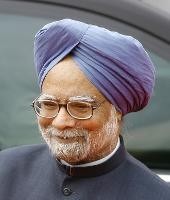Launched in 1991 by then-Prime Minister Narasimha Rao, India’s “Look East” policy was long regarded by many as lacking in vision and substance. Yet as India and the Association of Southeast Asian Nations (ASEAN) prepare to mark two decades of formal relations later this year, there is much to celebrate. Given the recent advances New Delhi has made in its relations with its Southeast Asian neighbors, as well as with ASEAN as an institution, both parties can proudly toast the progress achieved thus far. But they should also use the anniversary as an opportunity to strengthen ties further.
India has made significant strides in its relationship with Southeast Asia over the past year or so. The most visible trend has been the bolstering of security ties, a logical step since India shares maritime and land borders with some ASEAN states. Both sides also have common interests in tackling a wide variety of challenges, including counterterrorism, anti-piracy, counternarcotics, sea-lane protection and a rising China. India's burgeoning naval cooperation with Vietnam is a case in point. With more-frequent military visits, including one by a top-level military delegation last September, New Delhi has moved closer to offering Hanoi naval facilities for training and capacity-building. Meanwhile, Indian warships have been permitted to dock at Nha Trang port in southern Vietnam, and India’s ONGC Videsh Limited has been pursuing oil and natural gas exploration in two Vietnamese blocs in the South China Sea, despite Chinese displeasure.
Some of the other relationships have more of a commercial edge to them. This is particularly true in the case of Malaysia. Since the two countries’ Comprehensive Economic Cooperation Agreement came into effect in July 2011, progress on bilateral economic ties has accelerated, with Malaysian companies beginning to contribute much-needed investment in Indian infrastructure. Malaysia’s minister for internal trade and industry, Mustapa Mohamed, was so optimistic about relations that he told the India Malaysia Trade Investment Forum in Kuala Lumpur in November that Indo-Malaysian trade would exceed its target of $15 billion per year by 2015.

